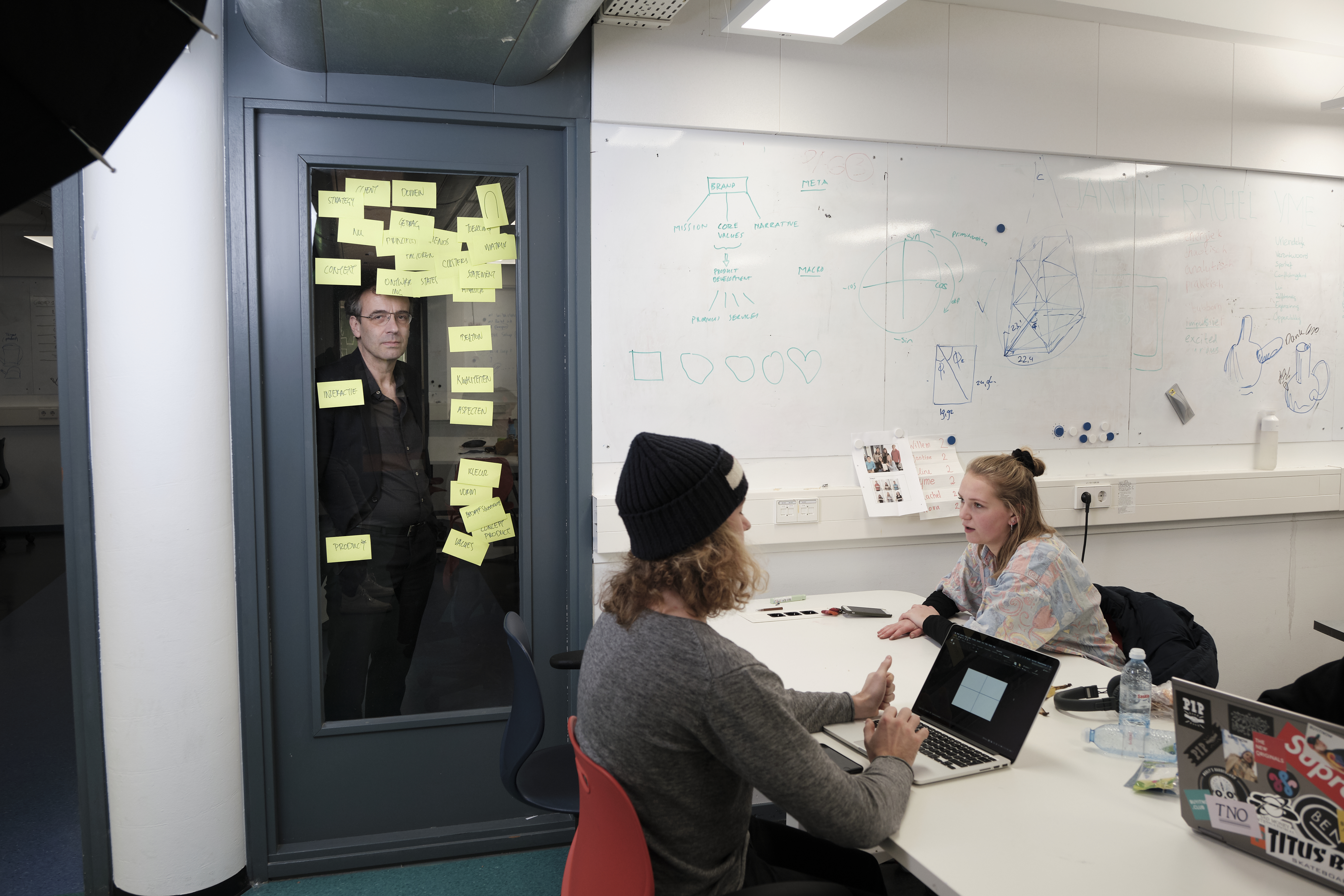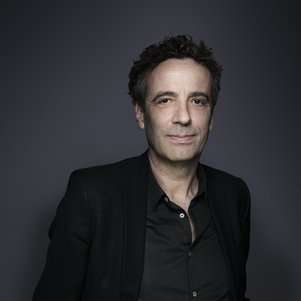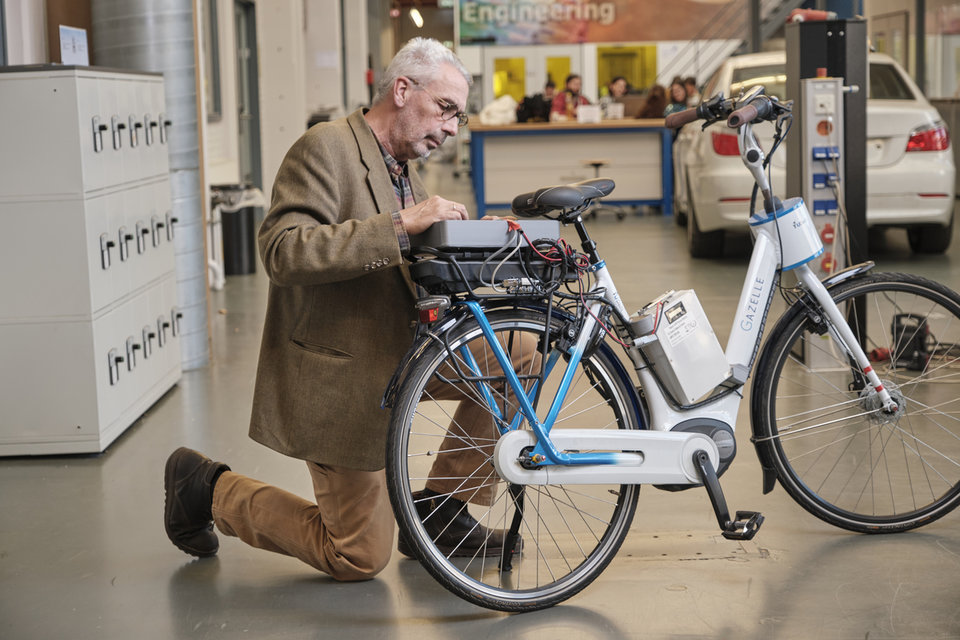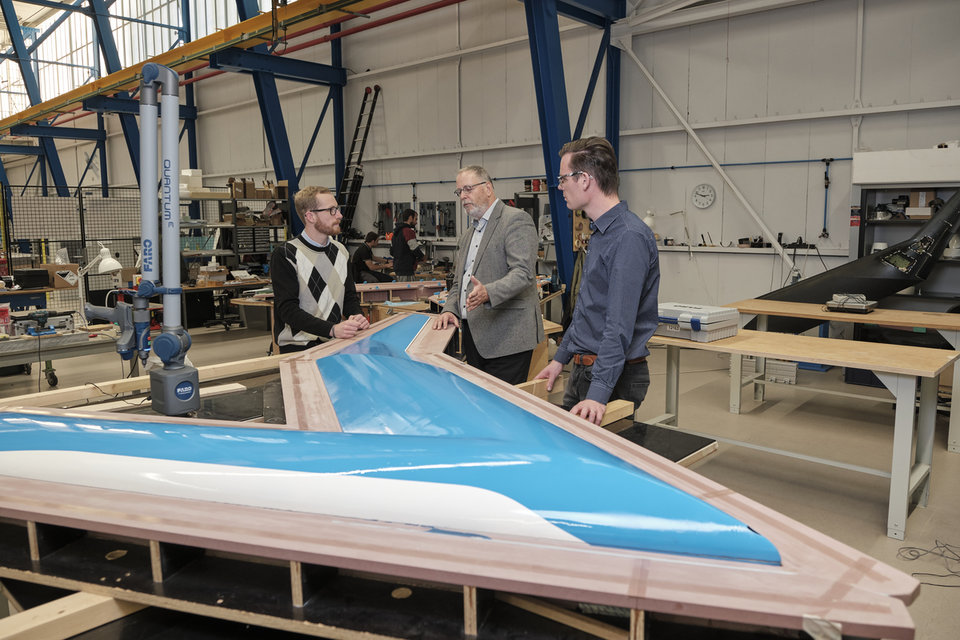Paul Hekkert, Professor of Form Theory, describes himself as a psychologist in a world of technology. “I have always been interested in all that is human: what makes people tick, how they live their lives, how human behaviour comes about.” Since arriving in Delft – he obtained his PhD here in 1995 for a thesis on the phenomenon of aesthetic judgement – his field of interest has expanded. “How can we make people’s lives more interesting and richer through technology and design, and how can we guide them in making the right choices? It starts by understanding how design and technology impact people’s lives. I carry out quite fundamental research into the relationship between humans and design. For instance, I look at how design evokes emotions. Aesthetics plays a significant role in this respect.”
MAYA
Hekkert studied and identified aesthetic principles in order to understand why people find things beautiful or not. One such principle is MAYA, which stands for ‘most advanced yet acceptable’. “According to MAYA, people find those products the most beautiful that are the most sophisticated but at the same time comprehensible and familiar. That is the boundary that designers need to work with. It’s a fine line that varies between users,” Hekkert explains. “But it does not mean that everyone has a different idea about what is beautiful. In very many respects, we agree on what is beautiful or new, particularly if we share a similar background, come from the same culture or have had similar experiences. A principle such as this can help us understand why and when people find the same things beautiful or, in contrast, differ in taste.”
Product experience
With his research group, Hekkert is one of the founders of the study of product experience. “Product experience is about aesthetics as well as emotions and meaning. Why do we find products beautiful, why do they prompt feelings such as satisfaction or admiration, and why do we attribute meanings to them like ‘cool’ or ‘sturdy’? I dare say that we have made a global name for ourselves in that field. We have built up a whole oeuvre on product experience through the senses: tactility, sound, and also how the senses work together in a multisensory experience.” The research into design and emotions by Pieter Desmet – Hekkert’s first doctoral candidate in 2001 – is also considered ground-breaking.
New focus
In recent years, Hekkert’s focus has moved from immediate product experience to the long-term effects of products on our behaviour, well-being and values. “The old way of thinking about product experience ties in with consumerism: how can we make products even more attractive to consumers? But there has now been a sea change in how designers, philosophers and the technology world – as well as public opinion – think about social responsibility. We are talking about dealing responsibly with the limited resources of the Earth, and taking care of our own well-being and health. In terms of design: how can we design the world in such a way that people make the right choices and do the right things?”
This change of approach hugely impacts the work of designers. With his colleague Nynke Tromp he wrote a book on the subject, Designing for Society. “Should you make designers responsible for the collective interest, and if they accept that responsibility, how does it affect their work?” Hekkert is sometimes criticised for the idea that designers should explicitly influence people’s behaviour. “People sometimes say, who are you to decide what is and what is not desirable behaviour. However, when we talk about behaviour that is obviously negative, such as smoking, nobody has an issue with that. What’s more, products, services and technology in general have always radically influenced our lives and behaviours. We were just not very aware of it. Only now that the long-term effects of our use of plastics, for instance, are becoming clear, are we alarmed.”
New breed of politicians
Hekkert believes that designers will thus become a new breed of politicians. “In the past, politicians had an ideology that said something about where the world should be headed in the long term. Today, long-term visions are few and far between. The main concern of politicians now is to please citizens so that they will be re-elected. In other words, the business of politics has shifted from the long to the short term, and from collective to individual interests,” says Hekkert. “Designers have jumped into the gap that politics left open. Far more than before, they are concerned with long-term and collective interests.”
That is a tall order. “Where will designers get the requisite knowledge and skills to be able to define these long-term and collective interests? Current user-centred design is geared towards proximity to the consumer and developing products together. That is not conducive to designing to serve collective interests.” So what would be a feasible approach? “I believe designers could seek more guidance from science. For example, we have the Delft Institute of Positive Design, where we look at how we can apply knowledge from the world of positive psychology, a science that has been considering for around twenty years what can help us achieve happiness in the long term. We are making increasing use of this knowledge to develop products that can contribute towards our well-being.”
Contemporary students
This switch in thinking about design coincides with the perspective of a new generation of students. “Ten or fifteen years ago, students were eager to graduate from an automotive company or to design a cool product at Philips. If you look at students’ graduation reports from the past few years, they are now far more interested in contributing to a better world.” As an example, Hekkert cites a graduating student who has designed a streaming platform inspired by Netflix that is specifically geared towards well-being. “Services like Netflix are great if you consider the range of programmes and entertainment they offer, but there are some perverse stimuli included. They have been designed to induce you to engage in binge watching, and therefore to watch more than you actually intend or would be good for you.”
In the well-being-oriented variant, the viewer is first invited to answer some questions about matters such as available time and interests. “Viewing recommendations are then not based on what everyone else is looking at, but rather on what respected experts consider to be worthwhile programmes. Those will not necessarily all be serious documentaries, but could include entertainment shows as well.” Something else lacking from the current systems is recommendations based on what your friends are watching. “This could consolidate your sense of connection with your environment. Many people do watch programmes because they have heard from others that they are worth watching, but the current recommendation systems fail to exploit that.”
The graduation research was inspired by the work of Tristan Harris, a former design ethicist at Google. He is one of the founders of the Time Well Spent movement, which together with technology companies wants to investigate how technology can help people make good use of their time. “Harris is trying to convince companies like Google, Netflix and Facebook that the current business model that keeps people on the platform as long as possible is not contributing to our well-being. The message is slowly but surely coming across. For example, many devices have started providing information on the time you spend on screen,” Hekkert explains. “This movement is in line with what we are saying: we need to move away from instant gratification towards long-term well-being.”
Virgin territory
This is a major research task that Hekkert is keen to engage with. “The challenge is immense, because there is still so much to gain both theoretically and from a methodological point of view. My mission is to change the profession of designers from a craft where you mainly need talent, creativity and intuition into a more knowledge-driven profession that works in a more evidence-based way. The two need not be mutually exclusive, but designers could seek far more information from experts and science,” Hekkert continues. This also implies a responsibility to be taken by the teaching staff. “If we educate our students with this in mind, we can look forward to products and services that contribute to the better world that we all want.”
Designers themselves also stand to benefit. “It will help designers present themselves as professionals who can explain to their clients how and why they are doing what they do. That might seem a bit blasphemous in some circles, as designers are still often regarded as artists who should not be curtailed in their creativity, but that is not what I am about. If designers set to work in a methodical manner, they will perform their work more systematically and be better able to account for what they do. It certainly does not mean that they should abandon intuition.”
Pragmatic idealist
Are designers really going to change our behaviour in order to achieve a better world? “I’m a pragmatic idealist, and I know it will not be easy. Behavioural changes are usually instigated by a small group that is already highly aware of how they are living. For instance, everyone in my circle is talking about being ashamed to fly while the rest of the population hop on a plane whenever they fancy.” But he continues to be optimistic. “Twenty years ago, no one thought smoking would become such a taboo. We have collectively contributed to this through campaigns, awareness and legislation. So the way we think can certainly change. The fact that not everyone is quick to agree does not absolve us of the responsibility to take action. You need to start somewhere.”




